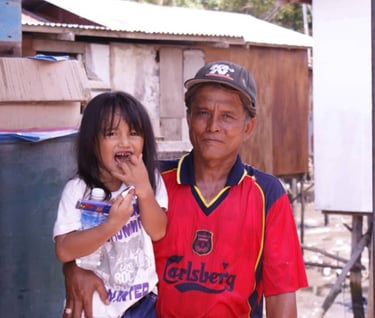Effort To Reduce Poverty


Global Effort
By: Tan Sri Son | 09/12/2024
Efforts to Reduce Poverty: A Global Overview
Poverty remains one of the most pressing issues worldwide, affecting billions of people across both developing and developed nations. Reducing poverty is not just about increasing income—it also involves improving access to education, healthcare, clean water, sanitation, and job opportunities. Governments, international organizations, non-profits, and communities have all played roles in addressing this challenge through diverse strategies. Below are key efforts made globally to reduce poverty:
1. Government Programs and Social Safety Nets
Many governments have implemented direct assistance programs to support low-income families. These include:
Cash transfer programs (e.g., Brazil’s Bolsa Família, India’s PM-KISAN) that provide regular financial aid.
Subsidized healthcare and education, especially in countries like Sweden and Malaysia, where public services reduce the burden on poor families.
Food assistance schemes such as food stamps in the United States or rice subsidy programs in the Philippines.
2. Access to Education
Education is a long-term tool for breaking the cycle of poverty.
Countries like Bangladesh and Kenya have expanded access to free primary education.
School meal programs help encourage attendance among poor children while also improving nutrition.
3. Job Creation and Skills Training
Unemployment and underemployment are root causes of poverty.
Governments and NGOs have created vocational training programs for youth and women.
Initiatives like microfinance (e.g., Grameen Bank in Bangladesh) empower small entrepreneurs to start businesses and generate income.
4. Healthcare Access
Poor health can prevent people from working or attending school.
Efforts like universal health coverage in countries such as Thailand and the UK reduce the impact of medical expenses on low-income families.
Vaccination campaigns and maternal care reduce mortality rates in developing regions.
5. Rural and Agricultural Support
In many poor countries, poverty is concentrated in rural areas.
Governments support farmers through subsidies, equipment, and fair market access.
The UN’s Food and Agriculture Organization (FAO) works on improving food security.
6. Infrastructure Development
Investing in infrastructure helps stimulate economic activity and access.
Projects such as building roads, electricity grids, clean water systems, and internet connectivity make it easier for communities to grow.
Examples include China’s poverty reduction programs that relocated people from remote mountainous areas to cities with better access to jobs.
7. International Aid and Partnerships
Organizations such as the United Nations, World Bank, and International Monetary Fund (IMF) fund programs that reduce poverty, especially through:
Loans and grants for education, healthcare, and economic development.
Coordination of the Sustainable Development Goals (SDGs), where Goal 1 is to “End poverty in all its forms everywhere.”
Conclusion
Reducing poverty requires a multi-faceted approach that combines immediate support with long-term development strategies. While progress has been made in many parts of the world, especially in Asia and Latin America, challenges persist—especially in war-torn and climate-vulnerable regions. Continued cooperation among governments, civil society, and global institutions is vital to ensure that poverty reduction remains a top global priority.
Coming Soon
We're on a mission ........................

Discover our full library of The Theos e-magazines and articles — all completely free to read.
We are a crowdfunded publication, dedicated to sharing knowledge, reflection, and theology with readers around the world.
Your support and donations help us continue offering open, accessible content for everyone, everywhere.
Join us in keeping wisdom free.
@ the theos since 2023 © 2023. All rights reserved.